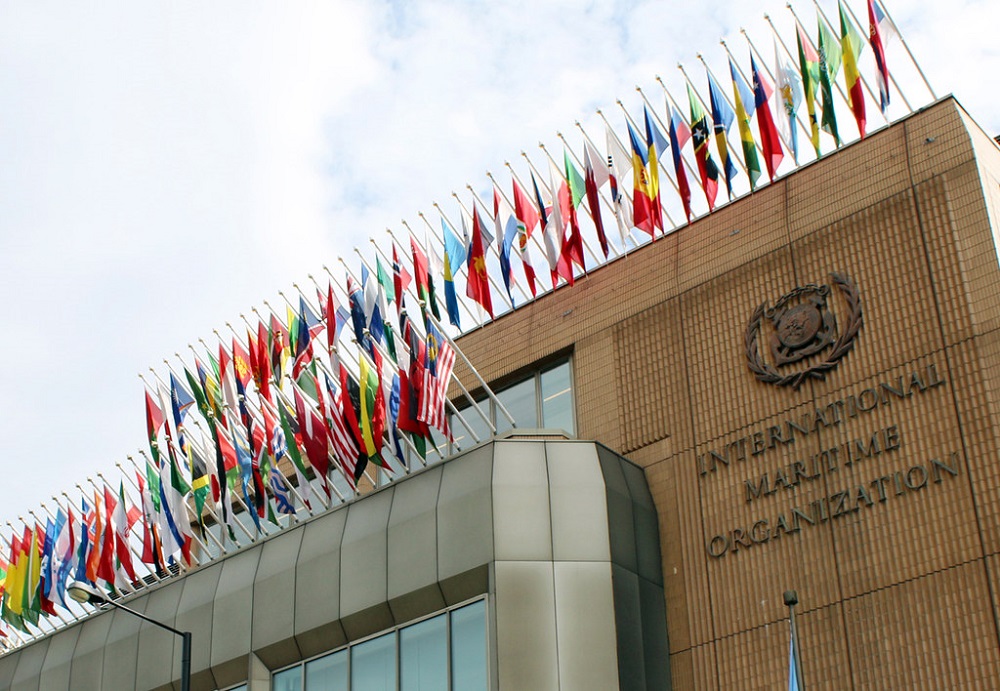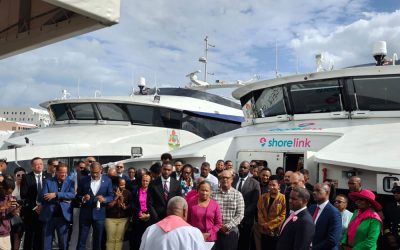Whether you consider it a utilitarian solution for determining shipping’s contribution towards greenhouse gas emissions, or an inherently flawed regulatory instrument that fails to grasp the nuances of ship operations, IMO’s Carbon Intensity Indicator is now an inescapable reality.
By 31 March 2024, shipowners should have submitted their calculated CII to their nominated Data Collection System (DCS) verifier along with the fuel consumption data that was collected for DCS during the course of the previous calendar year. In addition, each vessel’s operational CII and environmental rating will have been noted on its DCS Statement of Compliance (SoC).
As a means of gauging the progress made so far this week the Royal Institution of Naval Architects (RINA) is hosting a two-day technical conference: ‘Managing CII and Associated Challenges’ at IMO Headquarters in London. The aim is to bring together a variety of industry stakeholders to exchange feedback and insight on CII’s first year.

Edwin Pang, Chair, RINA IMO Committee
Among those contributing to the event will be Edwin Pang, founder and principal consultant at naval architectural consultancy Arcsilea, as well as chair of RINA’s IMO Committee. Pang was involved with technical support and coordination in various capacities during its development and as such, there are few aspects of the regulation’s development, including underlying rationale and formulae, that he hasn’t had some degree of involvement in.
Low achievers
Pang thinks that while there’s little to suggest at this stage that the first year of CII will throw up much in the way of surprises, the most intriguing aspect could be the consequences for the lowest environmentally performing (E rated) vessels. The owners of these ships will be required to update Part III of their Ship Energy Efficiency Management Plan (SEEMP) to include a corrective action plan that not only details why the required CII wasn’t achieved, in addition to a revised implementation plan outlining proposed remedial actions they plan to take before the vessel’s SoC can be issued.
“The interesting bit will be when the owners of these ships go to their Flag States and ask: ‘What do we need to do and what sort of plan is required? What corrective actions do we need to write?’ In some cases it will be obvious what they need to do, but perhaps many others where it’s not so clear,” says Pang.
Earlier this month, shipping analyst Clarksons estimated that around 30% of the global fleet will be D or E rated after the first year of appraisal. Pang is reticent about drawing any firm conclusions at this stage but suspects that the proportion of vessels falling into the two lowest categories will be roughly comparable with those in 2019, the first year that verified DCS data was reported to IMO, where around 35% of the global fleet were rated D or E. Although correction factors should have made compliance easier for some vessels, the increasing stringency of CII also means that vessels in 2023 needed to be performing to a five percent better environmental standard than four years earlier.
An additional complication is likely to be the distortion caused by geopolitics to the operating profiles of certain vessels. “Because of Russia and Ukraine there was some reconfiguration of trade routes, meaning that tonne miles might have increased. Generally if you cover a greater distance your CII rating gets better even though your absolute emissions get worse.”
The fact it’s calculated on the basis of grams of CO2 emitted per cargo-carrying capacity (either deadweight or gross tonnage depending on the shiptype) and nautical mile, rather than the actual cargo a vessel has transported, has been one of the most frequent criticisms levelled at CII. Therefore, a vessel might improve its CII rating (theoretically at least) by undertaking ballast voyages, i.e. reducing fuel consumption per distance travelled, while carrying much less than its maximum deadweight, although Pang observes that commercially such a strategy would appear to make little sense. On the other hand, the jury is still out on using the actual cargo weight since this rewards utilisation at the expense of creating a whole host of new issues.
Data deficit
Potentially the data accumulated from CII represents a treasure trove of insight into vessel emissions in the real world. One of the underlying assumptions of CII, borne of much from a desire for simplicity, is that ship power is proportional to speed cubed, despite a growing body of research that suggests that in fact speed reduction does not always achieve a commensurate decrease in fuel consumption. That DCS data isn’t made available (notwithstanding an annual report of shipping’s overall emissions) to anyone outside of the Flag States themselves raises the question of whether a golden opportunity is being lost, to the environment’s detriment.
But conversely Pang suggests it’s precisely these limitations that have compelled shipowners, operators, charterers and naval architects to invest so much time in understanding the root causes of carbon emissions and the necessary measures to reduce them.
“It’s one of the paradoxes of CII. Had it been perfect and completely fair it might not have had the impact of forcing people to think carefully about it, compared to a situation where the flaws are so obvious. There’s a silver lining to its imperfections because it’s really forced everybody to engage in finding solutions.”
He adds that CII’s manifold correction factors are requiring shipowners to scrutinise their data and put an increased emphasis upon monitoring. One example is mass flow meters, a technology once derided as expensive and unreliable, but which is now being enthusiastically adopted. Meanwhile, other regulatory tools such as the European Union’s Emissions Trading System (ETS) are also placing a monetary value on emissions.
Yet how much of this information is finding its way back to the shipyards and naval architects with the knowhow to translate it into more efficient ship designs? “It really requires the shipowners to be open enough to have that dialogue, and for the shipyards to be interested,” says Pang.
“In China, for example, the shipyards build to a standard design from one of the two big state owned conglomerates. While the owner contracts the yard, the designer (e.g. SDARI) may not have contact with the owner. There have been some initiatives on an individual shipowner level, but generally shipowners are too protective of their own data even when it’s not commercially sensitive.”
Conference
Looking ahead to this week’s events Pang thinks it will deliver a solid overview of the state of the industry with regard to CII.
“We’re starting with some shipowner views on what their experiences have been. Then we have a number of equipment and service providers presenting their solutions to CII problems. There are also a number of alternative views on CII and how we might change it for the better.
“During the final session that I’m moderating on Wednesday afternoon I plan to challenge the delegates to think: if they could change one thing in CII to drive further improvements in energy efficiency then what would it be? It will be interesting to see what they have to say after a year of the regulation being in place after all the noise we had at the beginning.”
It’s a question that Pang himself, being so heavily invested in CII for so long, finds difficult to answer, although he believes the evolution towards a more standardised language and the fostering of meaningful dialogue between different maritime stakeholders to be one of the lasting benefits so far. By the same token he’s quite candid that CII sometimes forces unfair comparisons between vessels that while superficially falling into the same type can have markedly different operating profiles.
“The ideal situation is that every ship is taken on its own merits and you think how to improve it individually. Conceptually that is what performance monitoring does – whether conducted internally or outsourced to a third party – before making specific recommendations. By comparison the way we’re doing it currently is too broad brush.”
Whether such a nuanced approach will ever be adopted by IMO only time will tell. A review of CII is already underway ahead of MEPC 83, late next year, but any further refinements could be several years into the future.
“Who knows?” says Pang. “Things have been done that we never thought possible in the past. Ten years ago we never imagined that a market based measure such as the EU’s ETS would ever come to shipping.”




